The Samsung Galaxy Note 4 Review
by Joshua Ho on October 15, 2014 9:00 AM EST- Posted in
- Smartphones
- Samsung
- Android
- Mobile
- Galaxy Note 4
Software
While it’s fully possible to focus purely on hardware and ignore software in some cases, the smartphone in general is proving that such a focus tends to be a bit short-sighted as even when there is a vibrant custom ROM community AOSP-based ROMs aren’t quite as polished as what the OEM produces. In the case of the Galaxy Note 4, Samsung’s additions to the UI become even more important as Android doesn’t have much of the native framework that one might expect, especially when it comes to making use of the Wacom stylus.
As the S-Pen/Wacom stylus is so critical to the Galaxy Note, I want to address this area first. When it comes to the stylus, it’s relatively hard to justify the existence of the stylus for simple navigation, but to this end the stylus is surprisingly useful when it comes to tapping extremely small touch targets on desktop websites.
However, the real functionality of the S-Pen actually comes in the form of taking notes. These use cases include quickly taking down a phone number or writing up a task list, which are conveniently translated into actual tasks or phone numbers to be stored in the calendar or contacts list. Unfortunately, those with poor handwriting will likely find that they cannot write as quickly as one may prefer in order to have accurate transcription, but when these features work they really are quite useful and cool.
While the ability to quickly jot notes down is nice, the S-Pen features really excel when we start looking at anything that involves graphing or writing complex equations. S-Note is surprisingly useful in this regard, and while I suspect that OneNote on Windows is more effective in this use case a full Windows tablet isn’t quite a mobile device the way the Galaxy Note is.
Outside of the S-Pen, TouchWiz continues to be quite acceptable in comparison to previous variants. While multi-window has been around for a long time on TouchWiz devices, I found it quite clunky in previous variations as it required long-pressing the back button in order to activate it. This made for a pretty poor experience as this basically meant that a lot of conscious thought was needed in order to make good use of this functionality. Fortunately, Samsung has also added a multi-window button into the multitasking menu which shows up on the top right of any app that supports multi-window. This is a massive improvement in user experience when compared to previous implementations of this feature. Unfortunately, the use of this function continues to be a bit clunky as it doesn’t seem to be aware of whether the previous application supported multi-window. As a result, opening another app in multi-window when one was already using a multi-window app won’t open the two applications side by side as one might expect. This feature is also dependent upon developer support, so this requires some thinking on the part of the user to check for multi-window support. While Samsung undoubtedly has a good vision for what they want from the phablet experience, the implementation isn’t quite there.
Samsung has also implemented dual-pane landscape views for certain applications, but it seems a bit strange that this wasn’t implemented in the settings menu either. While implementing such views is certainly dependent upon developer support, there is a level of inconsistency that comes from stock Samsung applications that affects the overall polish of the experience. There are also floating windows for some applications, which can help with one-handed usability but are mostly a way of improving multitasking functionality.
In terms of overall design, TouchWiz’s aesthetics are no longer a real issue for most, although this is definitely a matter of personal preference. There really isn’t much lag in most places but I have noticed that the multitasking menu has a rather long latency when compared to most other phones. This causes a noticeable drop in the speed at which I can multitask on a phone. Most people shouldn’t have any issues with TouchWiz at this point, although I suspect that the “option overload” in some parts of the UI will confuse users in general. Samsung is likely in a bind here as they once again have to try and keep features and behavior that upgrading users will expect while also accommodating for users new to Samsung devices. Samsung in general continues to ship TouchWiz with a massive number of software features that might be of use, such as the one-handed usability gesture that automatically shrinks the display to keep content within reach of one thumb.
On the verge of hardware and software, the fingerprint scanner is noticeably improved when compared to what we first saw with the Galaxy S5, and the experience associated with the fingerprint scanner is noticeably less painful when it comes to partial matches and similar behavior. I still think that the fingerprint scanner should be moved to the back of the phone for ergonomic reasons but the implementation is workable as-is.
Overall, the software experience that the Galaxy Note 4 ships with is surprisingly functional, even if there are rough edges that need a bit of polishing. Most people should find themselves quite content with the TouchWiz UX even if there are odd bugs here and there. While the Note 4's software is definitely more functional, Apple ships a more polished software stack with the iPhone 6 Plus.


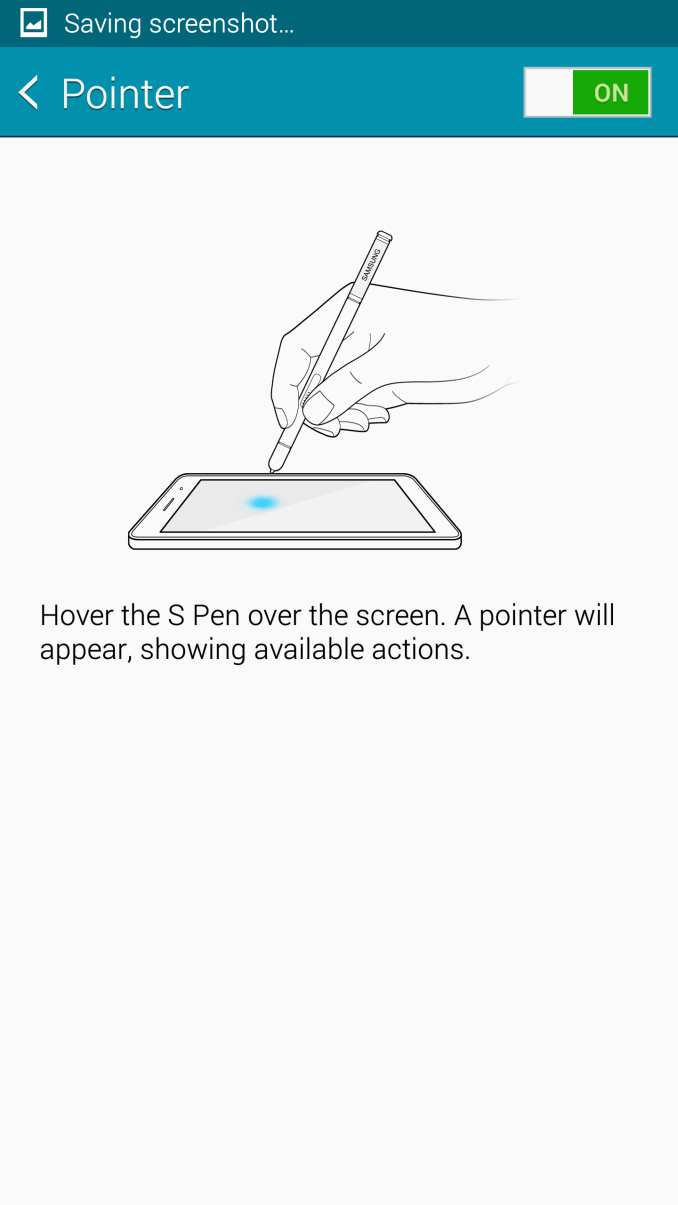
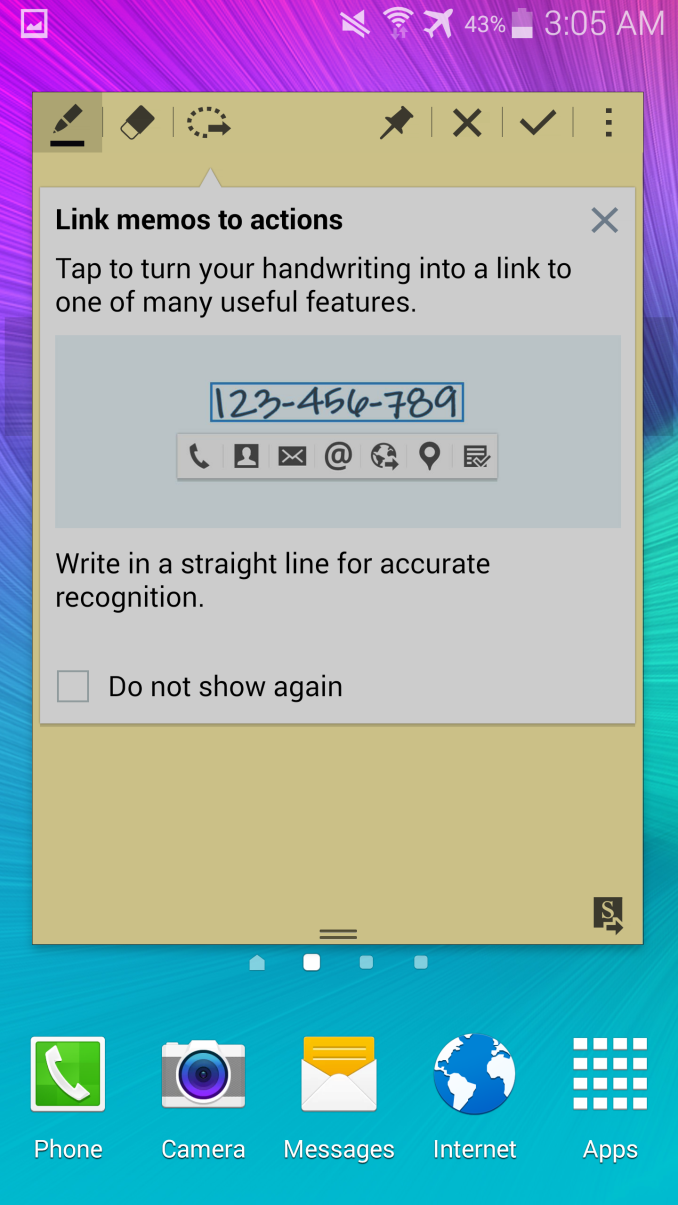


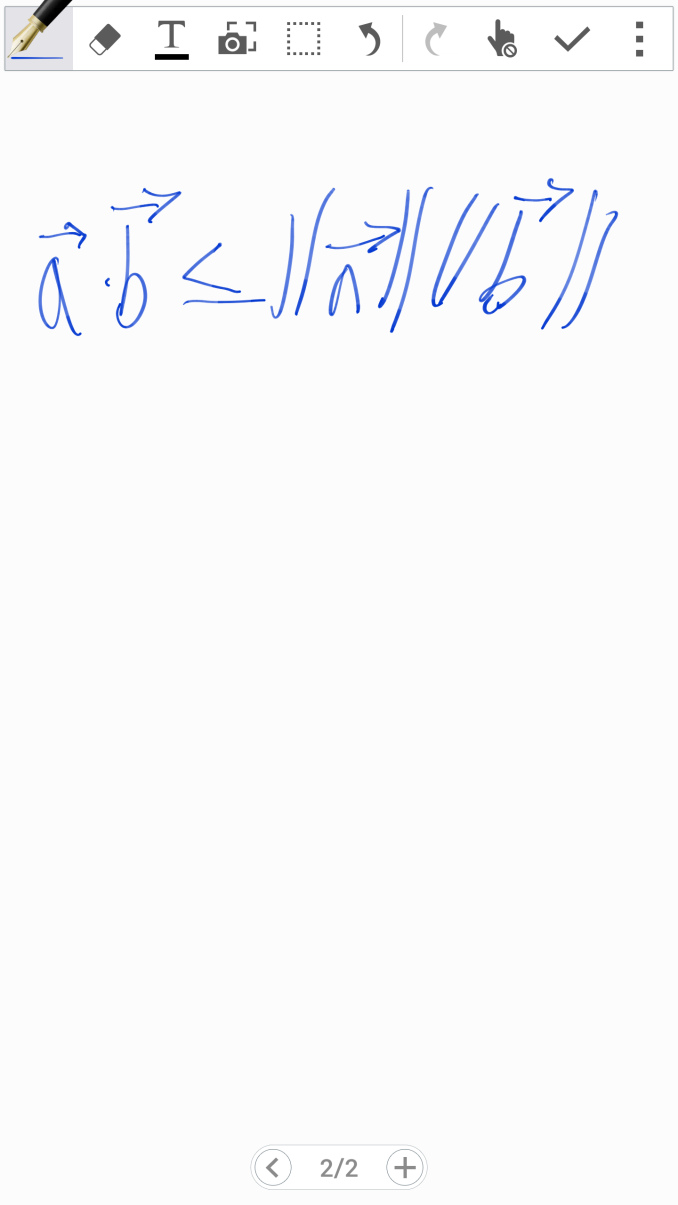
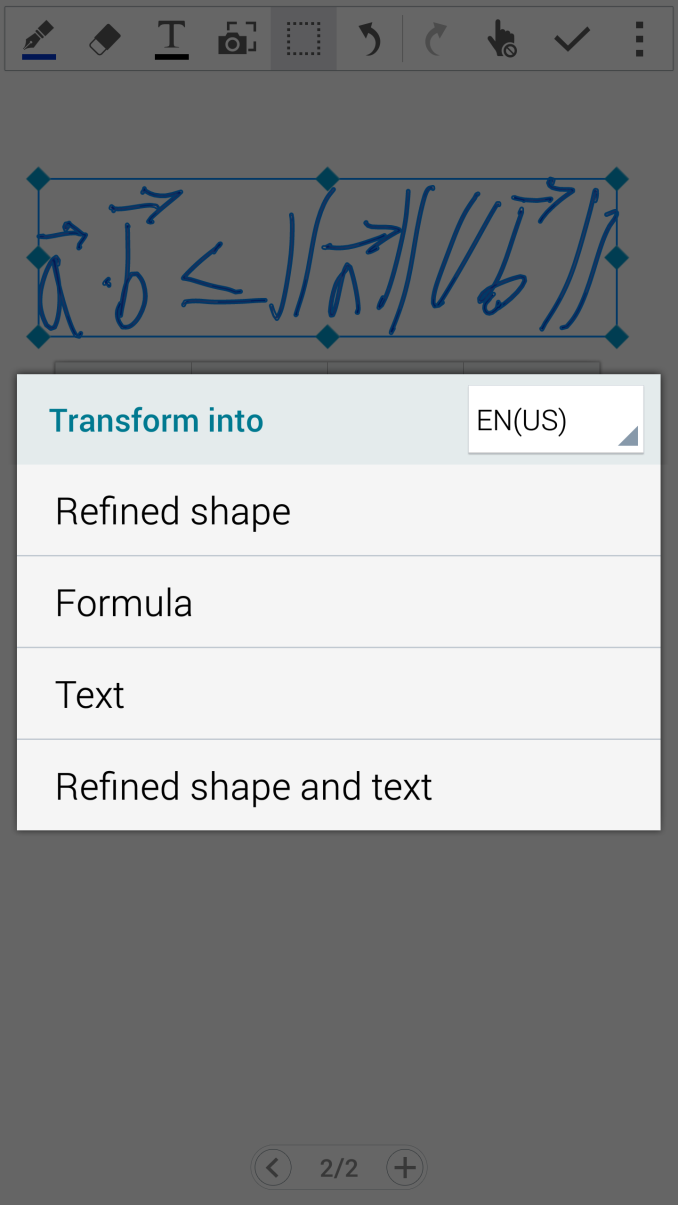

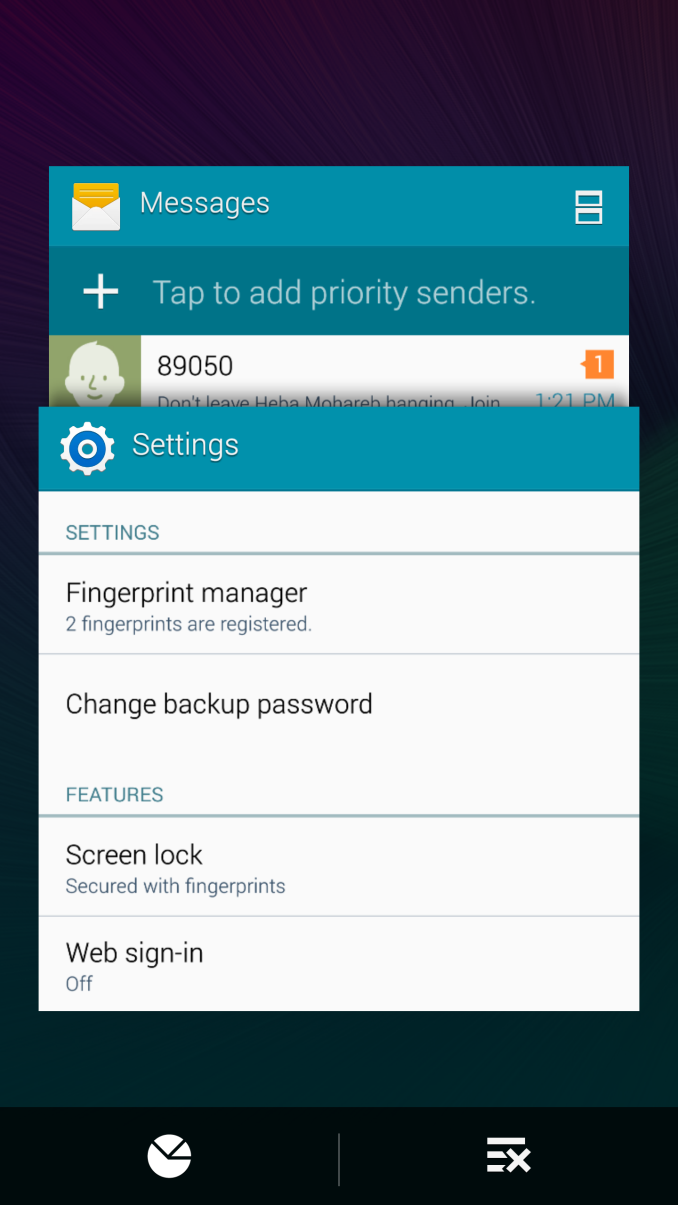
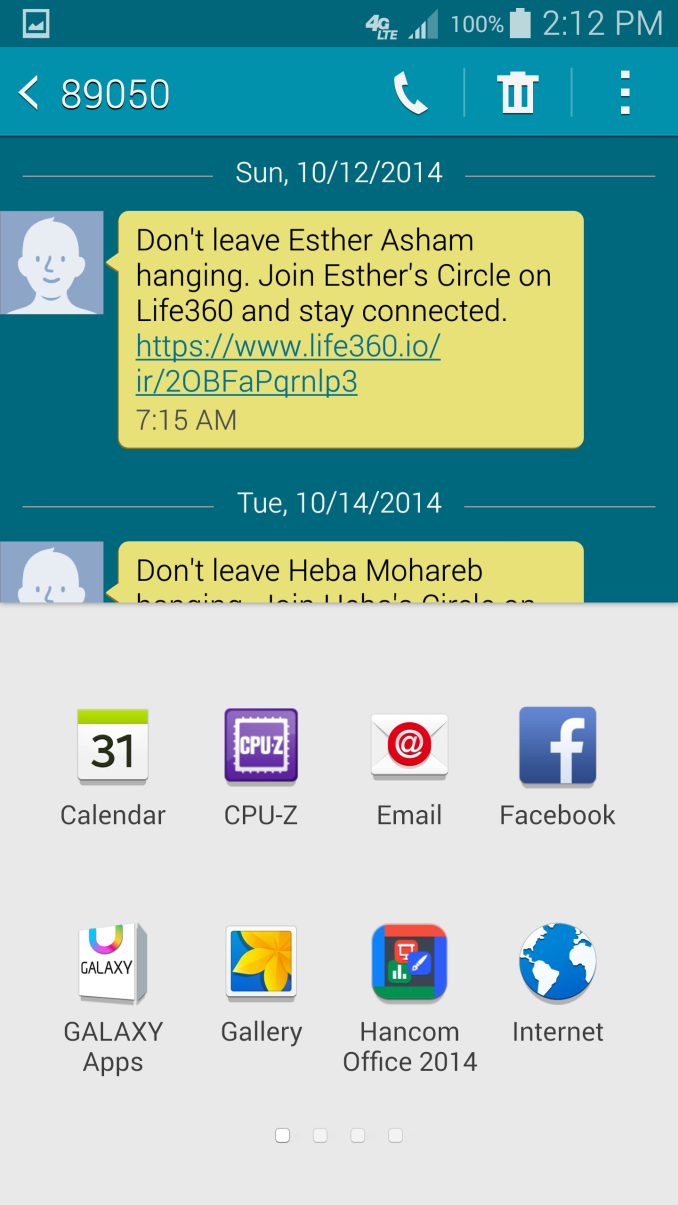
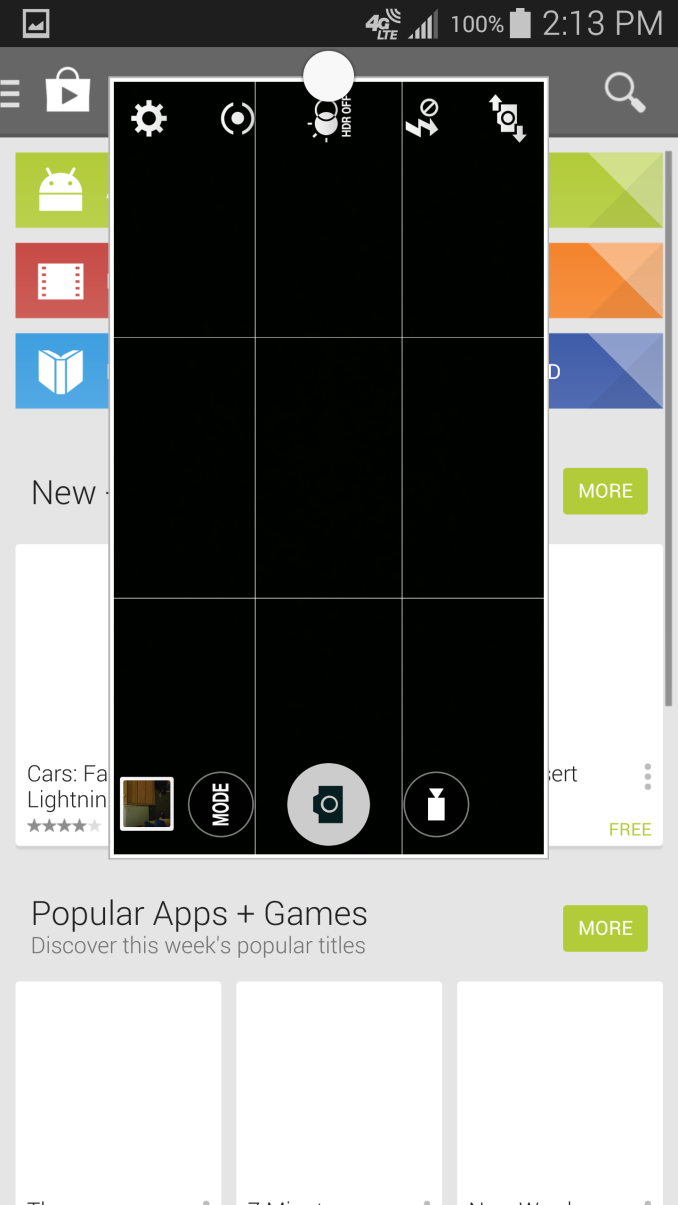
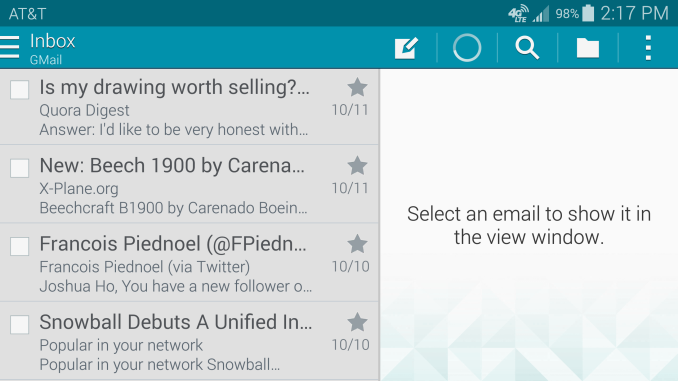

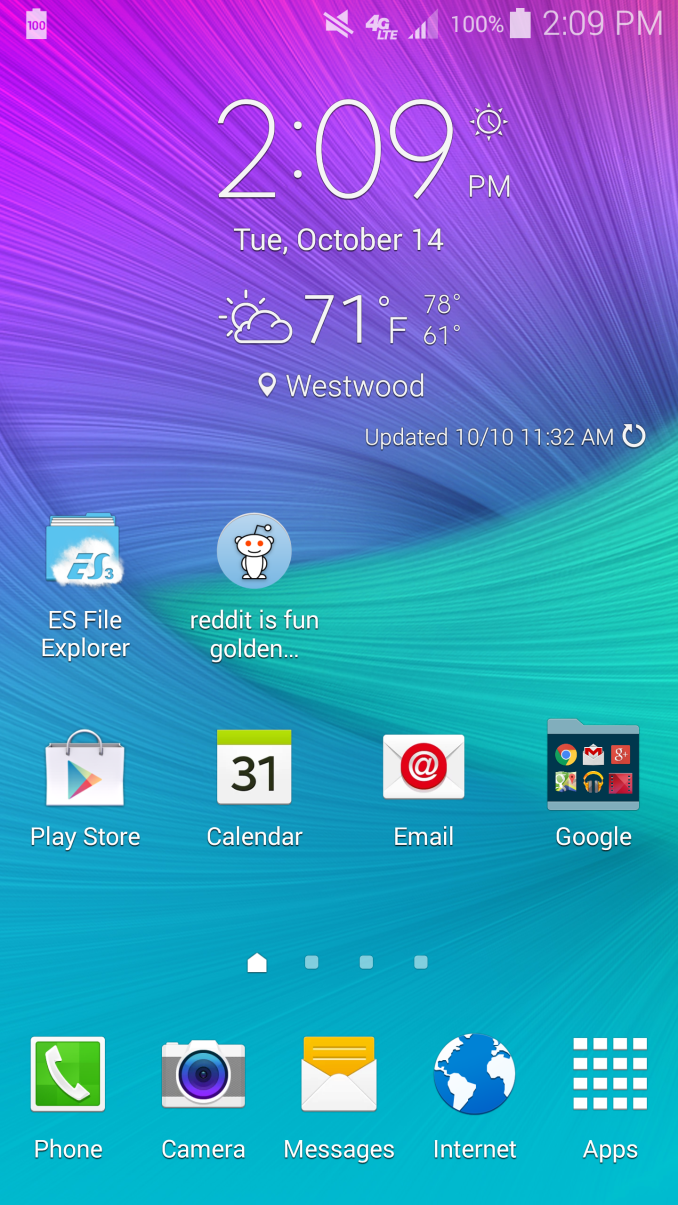









195 Comments
View All Comments
KPOM - Wednesday, October 15, 2014 - link
It looks like they focused on the design and the display this time. I like the trend away from over saturated displays.mkozakewich - Wednesday, October 15, 2014 - link
No, they used movie mode. I didn't catch if they went there from where they were.Really, though, a larger gamut is a strength. All we need is for OEMs to create profiles so that we don't have the weird problems we had. They can create an sRGB profile, and an AdobeRGB profile, too. Then, when Android finally supports proper colour systems, they'll be able to introduce that immediately.
Wolfpup - Wednesday, October 15, 2014 - link
Disappointed that this isn't waterproof like the Galaxy S5 and S5 Active. I'd get the S5 just because of that.Samus - Wednesday, October 15, 2014 - link
Waterproof phones have never proven a big hit with consumers. The Kyocera Hydro and Galaxy S5 have a lot of inconvenient plugs and gaskets, with harder to press buttons. Then there is the added weight of the Active. There is always an Achilles heel to mil spec implementation.But it's good consumers have the option of waterproof devices, I just don't think the Note 4 being waterproof would be a compelling feature. I mean, if you drop the thing in the urinal its so big chances are the toilet cake would prop it up...and it's probably not on every sailors list of devices to have something so big.
Hrel - Wednesday, October 15, 2014 - link
There's also the fact that it's not very important to most people, if you'll be by water on a boat or something a $10 bag/case will do. Or hell, even a ziplock bag really. If it's a major concern for you then you're probably willing to spend the $100 on micro-sealing.petar_b - Wednesday, October 15, 2014 - link
I see waterproof feature it more like investment into protecting the investment rather than a feature. I would pay $100 on micro-sealing - just to be sure: if I am walking on the rain (following GPS), or phone accidentally falls in a puddle, or my kid accidentally drops it in the bath that it would survive. And protection bags are ugly, can't go on meeting with that, can't put on/off all the time. Additional frames to protect the screen or side sealing do reduce GPS signal; so no after market solutions.darkich - Wednesday, October 15, 2014 - link
I think the lack of water resistance is actually the result of the stylus slot. I could be wrong, but it seems somewhat logical that waterproofing such design would be difficultTams80 - Thursday, October 16, 2014 - link
I don't think so, unless the plastic of the stylus slot couldn't be impermeable (something to do with thickness?). It uses Wacom Penabled technology, so it should be possible (the Fujitsu Q584 has some water resistance with such a AD stylus).darkich - Wednesday, October 15, 2014 - link
I think the lack of water resistance is actually the result of the stylus slot. I could be wrong, but it seems somewhat logical that waterproofing such design would be difficultrobinthakur - Wednesday, October 15, 2014 - link
Disappointing really, not much wow factor here even if the materials have improved it just looks like a large Galaxy 5 with even less items of interest. Guess I will stay with the iPhone 6 plus.